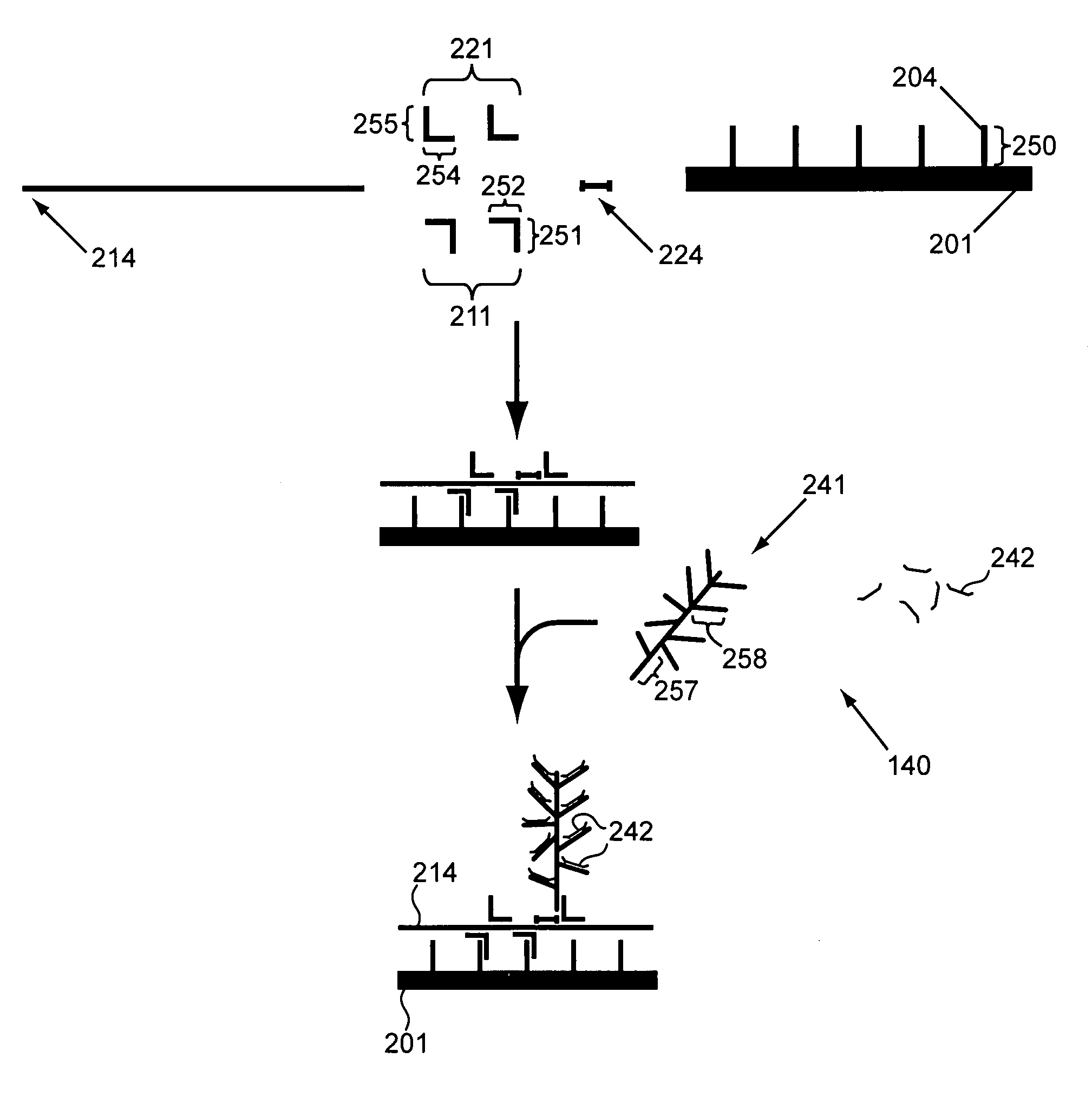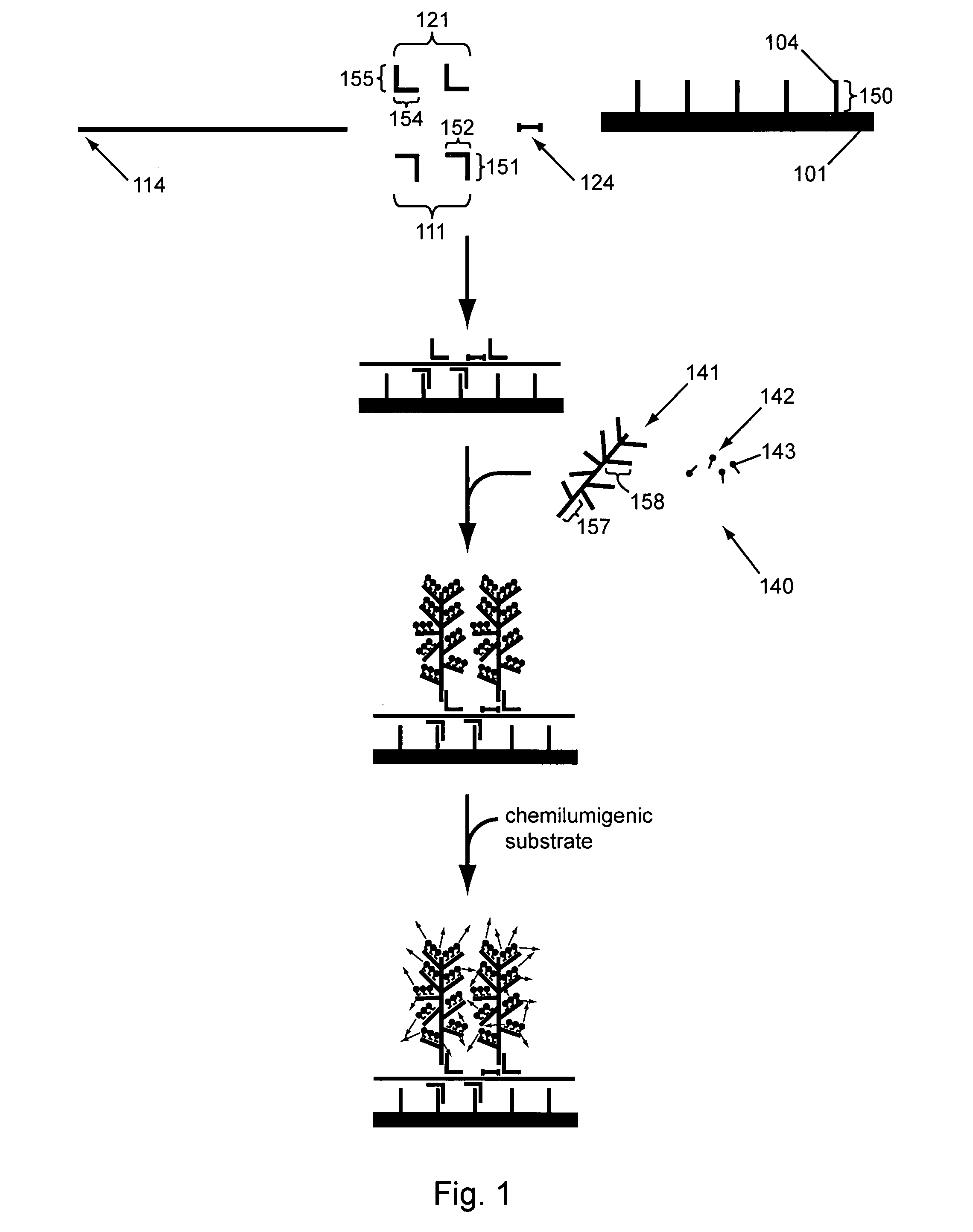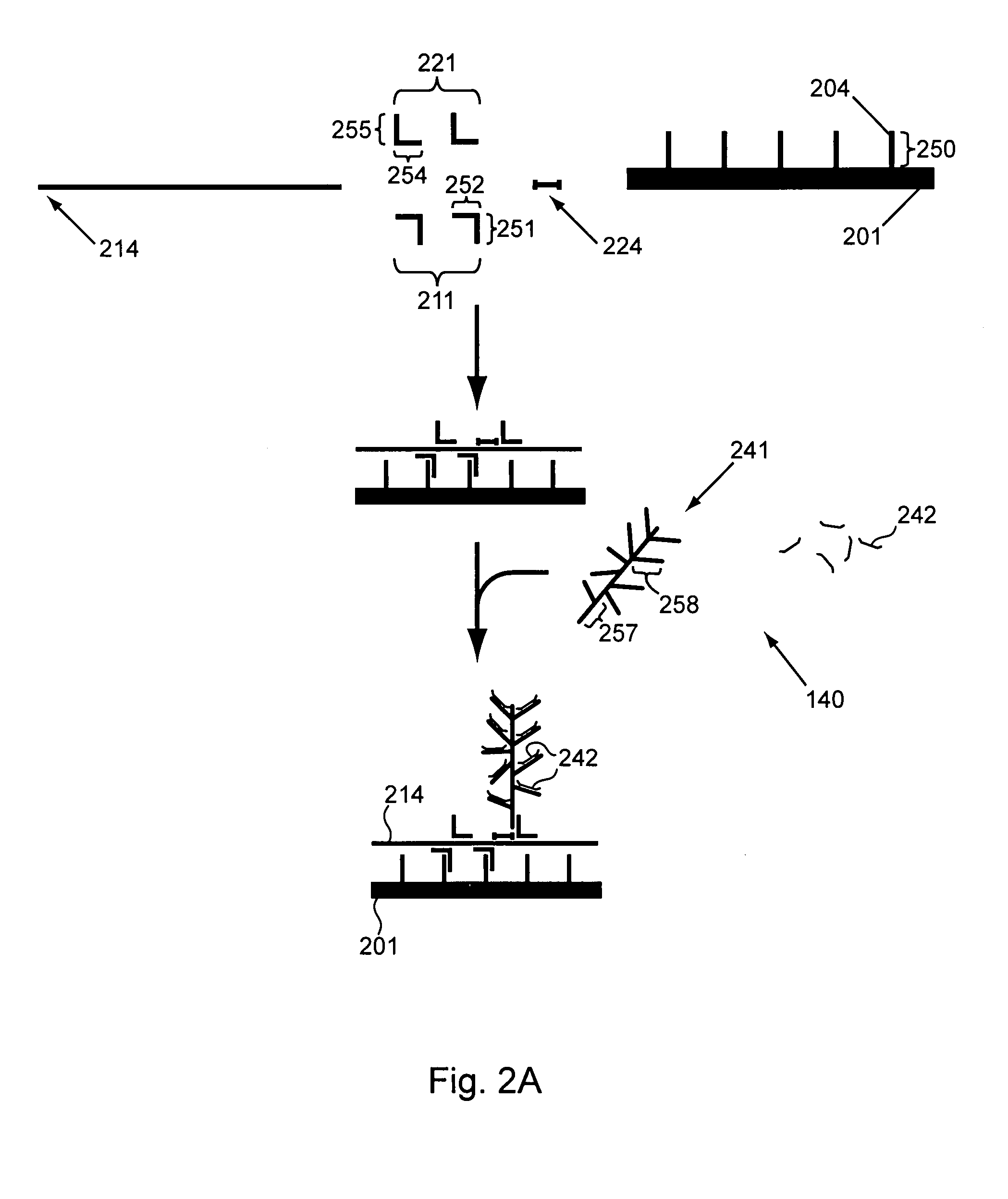Two stage nucleic acid amplification using an amplification oligomer
a nucleic acid and amplification technology, applied in the field of two-stage nucleic acid amplification using an amplification oligomer, can solve the problems of limited amplicon size, inconsistent amplification of enzyme dependent techniques, and difficulty in providing conditions for consistent enzymatic activity, so as to increase the sensitivity of a nucleic acid assay
- Summary
- Abstract
- Description
- Claims
- Application Information
AI Technical Summary
Benefits of technology
Problems solved by technology
Method used
Image
Examples
example
Zip Codes for Multiplexed Assays
[0172]The following examples are offered to illustrate, but not to limit the claimed invention.
[0173]The following prophetic example of a multiplexed two-step amplification showing how a first amplification can amplify specific amplification oligomers with unique zip code sequences to generate a highly amplified and deconvolutable signal in a second amplification.
[0174]In a first parallel amplification (shown in FIG. 7), different target nucleic acids of interest 70 (gene 1), 80 (gene 2) and 90 (gene 3), are captured on capture probes 71, 81 and 91. The target nucleic acids specifically hybridize to amplification multimers 72, 82, and 92. The amplification multimers each specifically hybridize with up to 15 amplification oligomers (for purposes of clarity in the figure, only one is shown per multimer) 73, 83, and 93; thereby amplifying each single target nucleic acid to 15 amplification oligomers in the first amplification.
[0175]The amplification olig...
PUM
| Property | Measurement | Unit |
|---|---|---|
| Tm | aaaaa | aaaaa |
| Tm | aaaaa | aaaaa |
| Tm | aaaaa | aaaaa |
Abstract
Description
Claims
Application Information
 Login to View More
Login to View More - R&D
- Intellectual Property
- Life Sciences
- Materials
- Tech Scout
- Unparalleled Data Quality
- Higher Quality Content
- 60% Fewer Hallucinations
Browse by: Latest US Patents, China's latest patents, Technical Efficacy Thesaurus, Application Domain, Technology Topic, Popular Technical Reports.
© 2025 PatSnap. All rights reserved.Legal|Privacy policy|Modern Slavery Act Transparency Statement|Sitemap|About US| Contact US: help@patsnap.com



